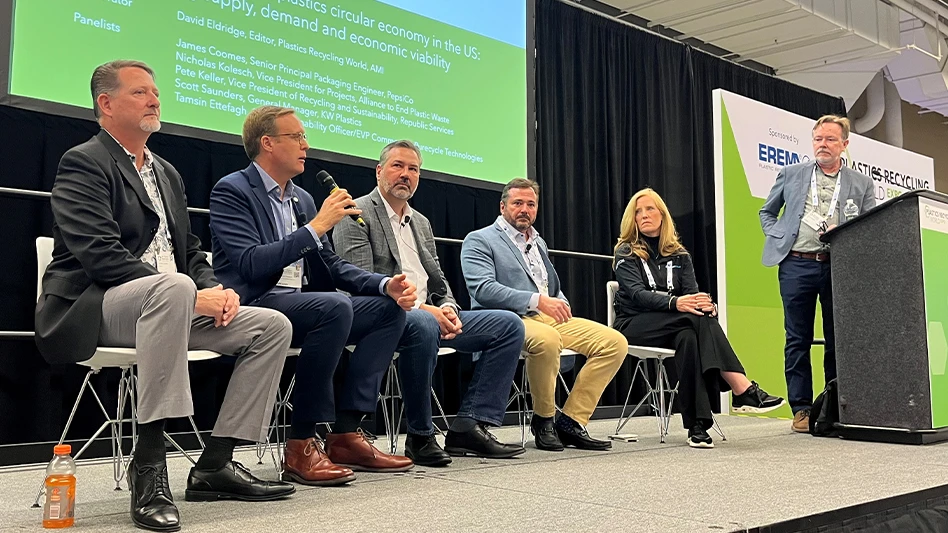
Photo by Chris Voloschuk
While speaking at the AMI Plastics World Expos North America in Cleveland in November, a panel of stakeholders from across the plastics value chain agreed increased collection is paramount to creating a circular economy in the U.S., despite challenges.
Brand owners have made recycled-content pledges for packaging with 2025 and 2030 deadlines; recyclers have built facilities or upgraded existing ones; and four states have begun enacting extended producer responsibility laws, but Nicholas Kolesch, vice president for projects at the Singapore-based Alliance to End Plastic Waste, said gaps remain in recycling collection.
“In most markets you have a quantity gap, meaning you’re not getting enough material collected,” Kolesch said. “But you also face a quality gap, so when [material] is collected, are those streams collected in a way where they’re not contaminated or [are] homogeneous, making it easier for the recyclers to [process]?”
Kolesch said the big challenge in the U.S. is to get plastics into material recovery facilities so good-quality bales can then get to recyclers.
James Coomes, senior principal packaging engineer for Harrison, New York-based PepsiCo Foods’ global packaging research and development science and technology team, represented a brand with recycled-content goals. He used his company’s Frito-Lay snack bags as an example of a plastic packaging format that has slipped through the collection cracks.
“Those [bags] are not collected in most municipalities, so, for us, that’s a very big challenge,” he said. “As we look and see where the U.S. is in this effort, we think it’s quite far behind because there’s lots of infrastructure changes that need to be made [and] lots of investments in new equipment and technologies that we know are out there. And, so, that’s really where we’d like to see the focus to help get all those currently not-collected plastics into the system and finding the appropriate home.”
Pete Keller, vice president of recycling and sustainability at Phoenix-based Republic Services, noted recycling rates for rigid plastic packaging range between 25 percent and 30 percent in the U.S. He added that Republic is trying to address how to collect more of that material, as well as flexible packaging.
Scott Saunders, general manager of Troy, Alabama-based high-density polyethylene (HDPE) and polypropylene recycler KW Plastics, said while the company has expanded twice in the last four years, collection of the materials it processes hasn’t grown. He estimated that the U.S. recycling rate for HDPE is 27 percent or 28 percent, with the bulk of that material coming from states on either coast. He added that HDPE recycling rates in the Midwest hovered closer to 5 percent.
Latest from Recycling Today
- Sesotec installation helps create food-contact rPET
- Gerdau Q4 results show drop-off in business
- Commentary: The right deal for America and US aluminum
- Oregon approves EPR Program Plan
- PRCC rebrands to highlight PET recycling in California
- Mazza Recycling adds to transfer station operations
- Century Aluminum sees record production at Sebree, Kentucky, smelter
- Michigan awards $5.6M in recycling, waste reduction grants





